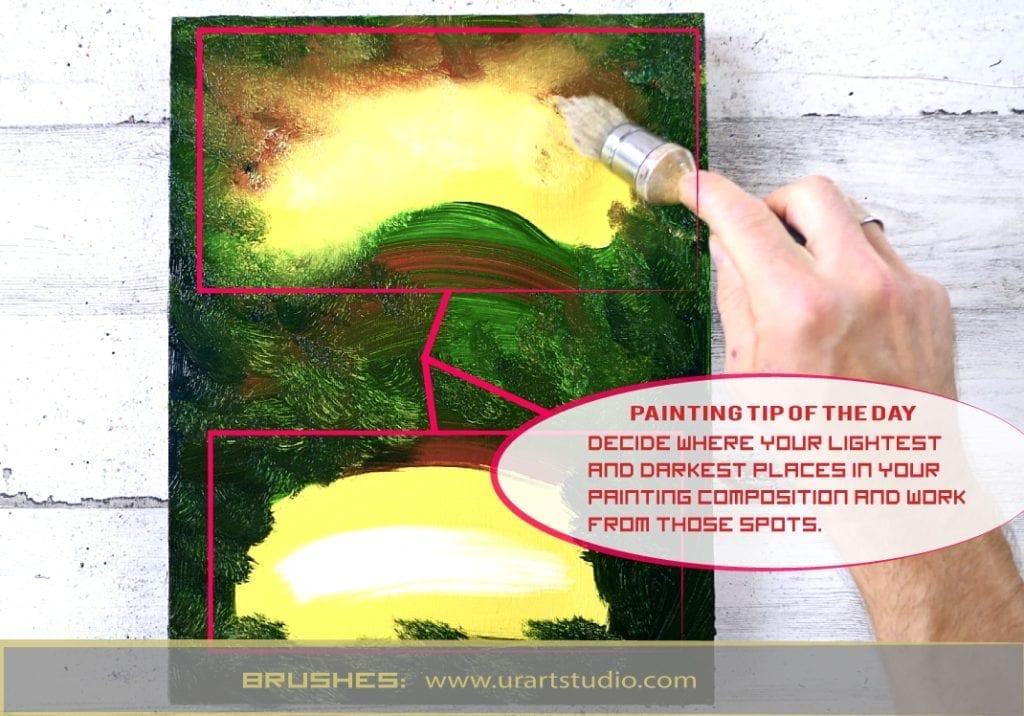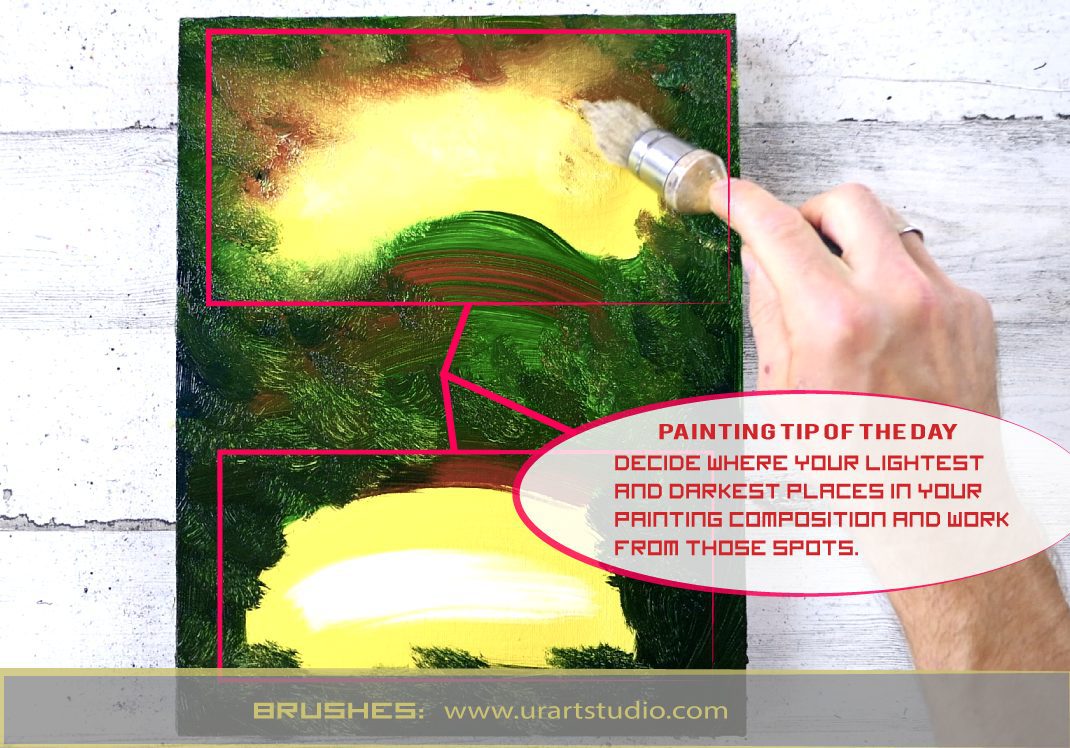🎨 Illuminate Your Art: Maximizing Light & Shadow in Your Painting Composition 🎨
Unleash the full potential of your landscape painting by mastering light and shadow placement!
Painting Tip of the Day: Work Like a Maestro with Light and Darkness!
When crafting vibrant landscape art or a captivating acrylic painting, one of the most important steps is to define where your lightest and darkest sections will live in your composition. By focusing on these areas, you create a powerful visual narrative that guides the viewer’s eye and evokes emotion. But this step isn’t just about plotting spots—it’s about storytelling. Let’s break it down further for an art journey that’s equal parts technical and magical!
🌟 Painting Techniques for Lightest and Darkest Sections
1.
Start from the Brightest Spot
Use acrylic paints like titanium white or soft pastel tones to identify your focal point of light. This could be sunlight peeking through clouds or glistening reflections on a serene lake. For example, in landscape painting, allow your lightest tones to act as beacons, drawing attention to key areas.
2.
Deep Shadows Have Depth, Not Flatness
Shadows aren’t just “dark” spaces—they’re alive. Blend deep tones like burnt umber or phthalo blue with textures using precision tools like flat brushes or round brushes. This creates rich layers, capturing the intricacies of forms.
3.
Blend Gradients for Harmony
Transition gracefully from light to dark by softening harsh edges with glazing techniques. Pair this with high-quality art supplies to ensure smooth transitions. Experiment with brushes to layer panels of color effortlessly.
4.
Heighten Contrast for Drama
Don’t shy away from bold opposites! Your lightest highlights will shine brighter when placed against strong shadows. Consider trying this approach on your next acrylic landscape painting to make your creations unforgettable.
5.
Perspective Adds Depth
By dimming the brightness as your scene fades into the distance, you create real-world depth. Try this technique when working with shimmering lakes or misty forests.
Why These Painting Tips are Essential for Landscape Art
When creating landscape paintings, light and shadow act as storytellers. They breathe life into color, textures, and forms. By using strategic contrasts, your acrylic art becomes a masterpiece where emotion and depth collide.
Art Supplies & Painting Tools for Mastering Light & Shadow
To create stunning works with strong light and shadow techniques, equip yourself with high-quality materials:
- 💡 Acrylic Paints: Our shop offers a premium selection of vibrant paints perfect for achieving dramatic light and shadow effects. Shop Art Supply Now!
- 🖌️ Brushes: Round and flat brushes are essential tools for gradient blending and detail work. Browse our curated Paint Brushes Collection.
Level Up Your Painting with Step-by-Step Tutorials!
Need to refine your technique? Explore our Step-by-Step Painting Instructions to perfect your use of highlights and shadows for realistic compositions. Learn More Here.
Show Off Your Masterpiece: Virtual Room Gallery
After mastering these techniques, showcase your work with our Display Your Painting in a Virtual Room service—it’s a unique way to professionally present your finished acrylic landscapes! Get Started.
If you require a logo design or custom t-shirt design, check out MyEventArtist.com for creative solutions tailored to your vision.
Keywords
light and shadow in art, acrylic painting tips, landscape painting techniques, shimmering lakes, acrylic art supplies, contrast in painting, gradient blending brushes, painting depth techniques
Hashtags
#PaintingTips, #AcrylicPainting, #LandscapeArt, #ArtByUrartstudio, #PaintingTechniques, #ShimmeringLakes, #LightAndShadow, #GradientBrushes



